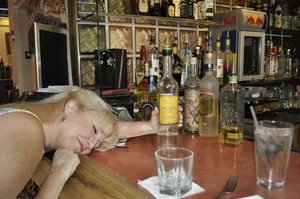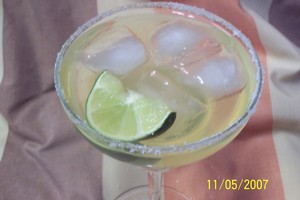“This is so smooth, it would be a sin to disguise it in a margarita,” said Nick, our tour guide as we were served our last taster, a Don Julio 70. “Bottoms up!”
Ever the good student, I did as instructed. Surprisingly, the shot of Don Julio 70 went down without the usual crash and burn.
I consider myself somewhat of a margarita connoisseur, so when I opted to take the Santa Fe tequila tour instead of a traditional food tour, I was looking forward to revisiting “Margaritaville.”
Not this time. Top Shelf: Tequila Class & Sampling in historic downtown Santa Fe was no pub crawl. College favorite Jose Cuervo was nowhere to be seen. Instead, we were regaled with thought-provoking history, educated about tequila/food paring which included tasting centuries’ old traditional Mexican recipes, and provided statistics on the progression from illegal mescal to high quality and high priced sipping tequila, as well as subtleties between types and labels. We received food for thought and for the belly.
And, of course, a bit of libation to ensure it all came together.
First on our agenda was mezcal, which is a similar to tequila but is made from maguey, a plant from the agave family. It has a strong smoky flavor and usually consumed straight. Because of its potency, there is a saying, “para todo mal, mezcal, y para todo bien también” (for everything bad, mezcal, and for everything good, as well). Sometimes mezcal is sold con gusano – with a larval moth worm at the bottom of the bottle.
I asked Nick if there was anything to the legend which alleges if you drink the bottle and then eat the worm, you will hallucinate. He replied, “If you drink a whole bottle of tequila, you will hallucinate, with or without the worm.” Enough said.
I learned that tequila can only be produced in Mexico, and size matters – the quality of the tequila is directionally proportional to the percentage of pure blue agave. Lesser quality uses no less than 51% agave, but with other sugars making up the remainder.
Age is also a consideration. With 100% agave tequila, blanco or plato (white or silver) are generally un-aged, harsher and are best drunk quickly, accompanied by a lick of salt and a bite of lime.
Reposado tequila is “rested” for two months to one year in oak barrels; añejo is aged for one to three years, and extra añejo is aged for more than three years. The older the tequila, the better and smoother it tastes. Añejo is to tequila what cognac is to brandy and should be sipped alone as it does not leave behind the typical alcohol burn. It’s served in a snifter glass instead of a caballito the traditional narrow tequila shot glass. According to Nick, Don Julio 70 is the best.
The food parings that were served during the class were posole – a tasty pork stew and the best salmon tacos I’ve ever eaten.
In all, a total of 1.5 ounces of high quality tequila was served, so no one was inebriated – at least not at the end of the class. However, additional tequila was available to be purchased afterward, so who knows?
Five tequila, six tequila, seven tequila, morgue.









